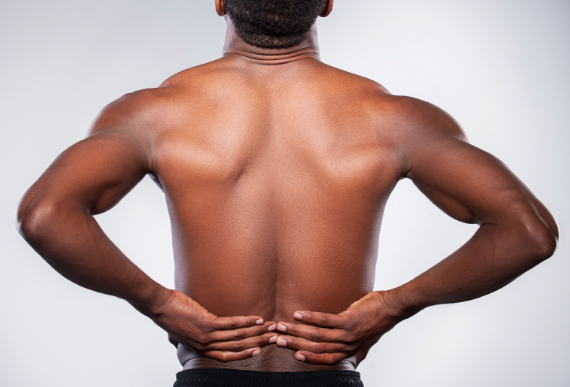Back pain is very common, and it cuts across all ages.
Possible causes of back pain include back muscle strain or ligament strain.
This can be as a result of lifting a heavy object, twisting, or a sudden movement can cause muscles or ligaments stretch or develop microscopic tears.
Here are ways you can alleviate your back pain.
Avoid screens
It shouldn’t be a surprise that slouching in front of your television, computer screen, video game console, and looking down at your phone is bad for your back.
The spinal consequences can start early.
A good night’s sleep
Sleep disturbances are common among people with chronic back pain, and not getting enough quality sleep may actually worsen inflammation and pain.
For a better night’s sleep, invest in a good mattress and experiment with different sleeping positions.
Keep exercising
Activity is often the best medicine for back pain.
Simple exercises like walking can be very helpful. But remember to move in moderation.
Stay away from strenuous activities like gardening and avoid whatever motion caused the pain in the first place.
Medication
Even as you practice patience, a nonsteroidal anti-inflammatory drug (NSAID) such as ibuprofen (Motrin, Advil) or naproxen (Aleve) can help ease the pain you’re pushing through.
Sleep with a pillow under your knees
Sleeping on your back puts pressure on your spine.
Elevating your legs slightly relieves this pressure on your back as you sleep. You can cut that pressure in half by placing a pillow under your knees.
Alternative cold/hot therapy
The best way to use alternative cold/hot therapy is to start with cold.
As soon as the spasms begin, reach for that ice pack. Apply ice, alternating on for 20 minutes and off for 20 minutes for a period of 48-72 hours.
At this point, begin gentle stretching exercises to increase circulation and relieve tightness.
Then, add heat. This will help get red blood cells to the area, which will promote healing.
Follow the same procedure as the ice; 20 minutes on and 20 minutes off until lasting relief is felt.
Office ergonomics
Many people spend long days working at desks, hunched over computers. If you don’t practice proper ergonomics at work, your back, neck, and shoulders may suffer.
To improve your workstation, position your computer monitor at eye level, at least 20 inches away from your face. Invest in a comfortable chair with armrests and good lower back support.
Keep your head and neck in line with your torso, and your shoulders relaxed. While you work, keep elbows close to your body, and your forearms and wrists parallel to the floor.
Stretch your hamstrings twice daily
One often overlooked contributor to lower back pain is tight hamstrings.
If your hamstring muscles—located in the back of your thighs—are too tight, your lower back and sacroiliac joints will be stressed, leading to more pain.
Hamstring stretching should be done carefully and at least twice per day.
Increase your calcium and vitamin D intake
Strong bones can help prevent osteoporosis. It’s one of the most common causes of back pain later in life, particularly among women.
Keep the bones in your spine strong by consuming plenty of calcium and vitamin D
You can get calcium in milk, yogurt, and vitamin supplements.
You can get vitamin D in fatty fish, egg yolk, beef liver, and cheese.
Massage
Massage helps relieve back pain naturally by increasing your circulation, detoxifying your system, and increasing your endorphins.
Copyright 2024 TheCable. All rights reserved. This material, and other digital content on this website, may not be reproduced, published, broadcast, rewritten or redistributed in whole or in part without prior express written permission from TheCable.
Follow us on twitter @Thecablestyle

